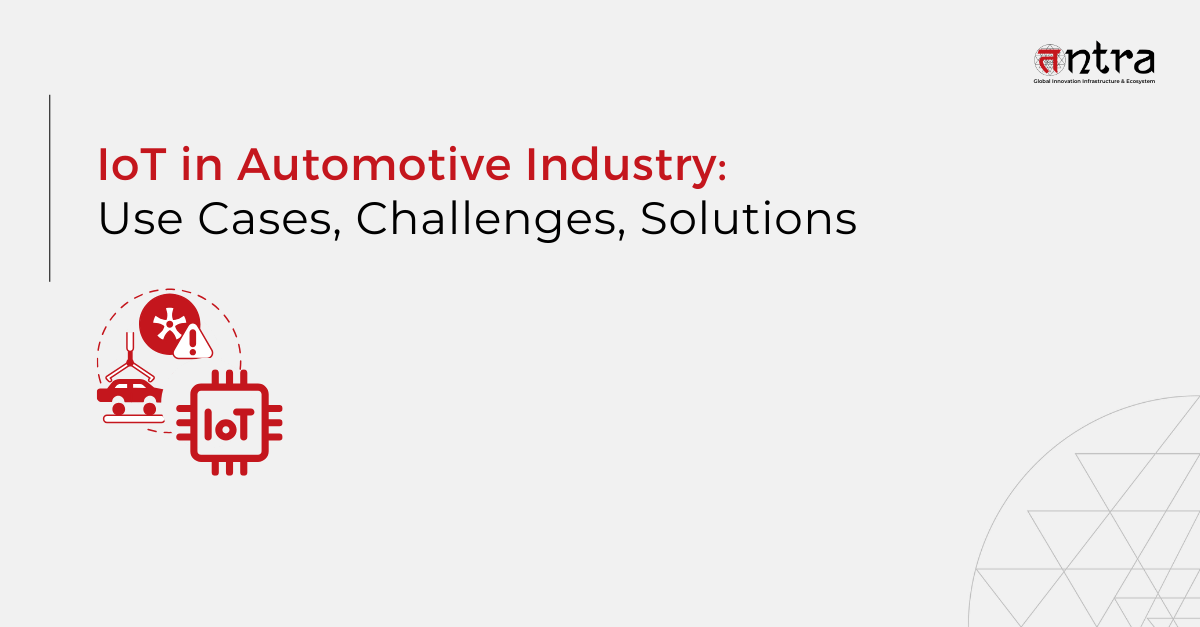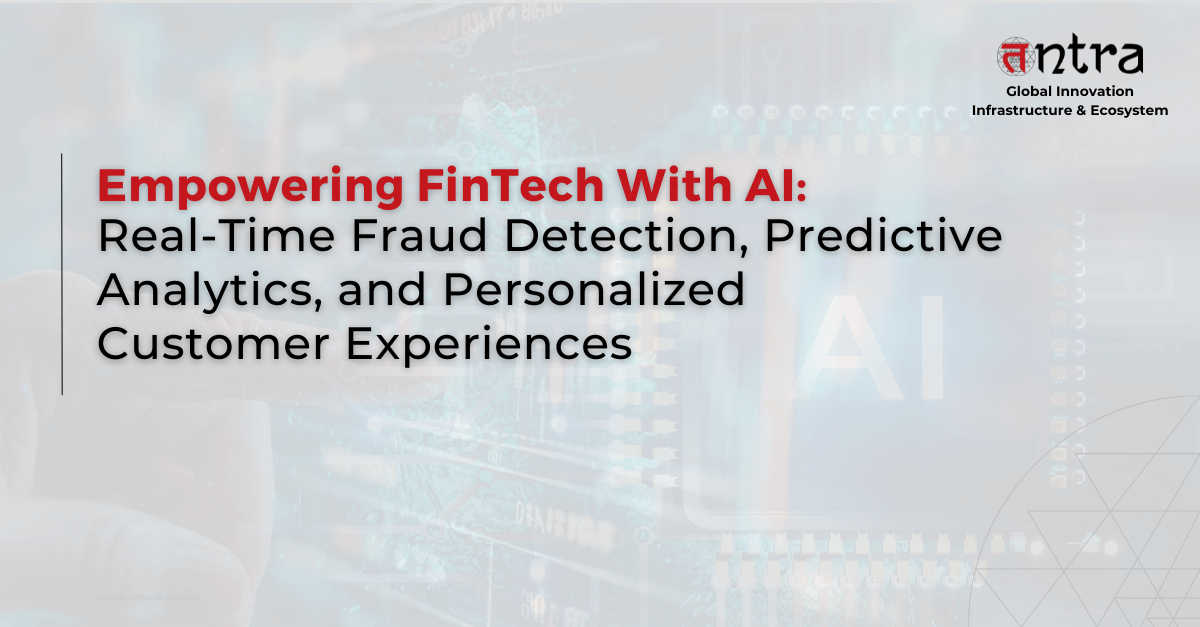
IoT in Automotive Industry: Use Cases, Challenges, Solutions
Table of Contents
ToggleThanks to improvements in automation, data analysis, and connection, the Internet of Things (IoT) is completely changing the automobile sector. Automotive IoT technology makes real-time data collecting and predictive maintenance possible, which enhances vehicle performance and safety. This is especially true with the growth of electric vehicles, smart cities, and sophisticated in-car systems.
Vehicle-to-Everything (V2X) communication is used by connected cars to improve traffic flow and lower accident rates. IoT’s influence on fleet management and autonomous driving promises a safer, more efficient future on the roads, despite obstacles like data security and integration costs. Continue reading to learn more.
The first self-driving cab in history without a backup driver in the front is available from Waymo. In the Phoenix Metropolitan Area, the Waymo One service went live in 2020, while in San Francisco, the taxi debuted in 2022. Taxi riders can enjoy greater privacy, play their favorite music, and adjust the interior temperature while traveling. AI and ML algorithms, LiDAR, cameras, and radar sensors are the engines behind autonomous driving technologies.
In contrast to Waymo’s autonomous vehicles, which rely on ultrasonic sensors, Tesla Autopilot depends on camera-based technology to provide full autonomy. Tesla vehicles are able to navigate, change lanes, and autosteer without the need for a driver. Nonetheless, the driver must be seated in the front seat.
Adaptive cruise control, lane centring, and speed sign recognition are all components of Ford’s BlueCruise control system. Though BlueCruise is limited to specific US roadways, it is still capable of braking, acceleration, and lane keeping while enabling hands-free driving. Although BlueCruise does not offer a fully autonomous mode, the car is fitted with infrared cameras that aim to track the driver’s attention on the road.
Under the MineStar trademark, Caterpillar, the largest construction and mining equipment manufacturer in the world, unveiled a number of technological items. Mining firms can use Cat MineStar solutions to automate their operations, remotely manage equipment, acquire real-time equipment health information, and increase worker safety by keeping an eye on machine operators’ attention and weariness and alerting them to potential dangers.
The Role of Next-Gen Connectivity
A major driver behind the rapid advancement of IoT in automotive is the rollout of 5G connectivity. 5G ensures better connectivity between vehicles and the cloud, allowing for the transmission of greater data sets at higher speeds—five to ten times faster than 4G technology. This leap in bandwidth and low latency streamlines vehicle-to-everything (V2X) communication, connecting cars seamlessly with infrastructure, other vehicles, and traffic management systems. The result? Enhanced predictive modeling, smoother navigation, and more reliable vehicle-to-vehicle communication.
With 5G, automotive IoT applications extend further:
- Fleet managers can monitor vehicles in real-time, optimize routes, and receive fast over-the-air software updates.
- Remote vehicle control becomes viable, allowing for interventions or diagnostics from afar.
- Over-the-air updates keep car software current, improving performance and security without service center visits.
(Source: itransition)
IoT in Automotive Industry: An Upward Trend
According to IoT Analytics’ 171-page State of IoT Summer 2024 report, there were 16.6 billion connected IoT devices by the end of 2023 (a growth of 15% over 2022). IoT Analytics expects this to grow 13% to 18.8 billion by the end of 2024.
The automotive IoT market is expected to reach a size of USD 322.0 billion by 2028, increasing at a compound annual growth rate (CAGR) of 19.7% from 2023 to 2028. In terms of revenue, the market was anticipated to be worth USD 131.2 billion in 2023. The market’s industry trends are analysed in the latest research study.
Germany is a pioneer in the development of connected car technologies in the global IoT in automotive industry because of its strong automotive sector and excellent manufacturing capabilities.
How IoT is Transforming Automotive Industry
The increasing significance of IoT in automotive industry is reflected in the progression of the automobile IoT industry through several significant milestones. Because of the growing popularity of electric vehicles, better in-car entertainment systems, the development of smart cities, and government initiatives to improve road safety, it is anticipated that the automotive Internet of Things will expand significantly.
IoT Use Cases in Automotive Industry
- Data Analysis
The automotive industry uses data analytics in the Internet of Things (IoT) to gather and examine massive amounts of data generated by connected cars and their environment. Manufacturers and service providers can use this information to make well-informed judgements about driving behavior as well as vehicle performance and maintenance. Businesses that use data analytics are able to anticipate probable problems, maximize fuel efficiency, and develop customized services based on the requirements of individual drivers. - Automation
Significant advancements have been made in IoT’s capacity to automate several automotive activities. Automation of comparatively complicated activities, such parallel parking or keeping a safe distance from other cars, improves safety and lessens driver stress. This deep IoT connection is a definite step towards the development of driverless vehicles in the future. - Vehicle Control
The vehicle controller plays a crucial role in bringing IoT-enabled cars to life. By evaluating the car’s real-time location and following a pre-mapped path, the controller manages key driving functions such as adjusting the steering, selecting the optimal gear, and applying the brakes as needed. This seamless coordination allows the car to move smoothly and respond instantly to changing road conditions—even without constant driver input. - Connectedness
The Internet of Things in automotive industry is exploding in terms of connectivity. It makes it possible for cars to easily connect to other cars, smart city infrastructure, smartphones, and home appliances. The Vehicle-to-Everything (V2X) concept has the potential to significantly improve driving experiences overall, reduce traffic, and prevent collisions. - Self-driving Cars
For massive amounts of real-time data collecting, processing, communication, and sensor fusion, autonomous or self-driving cars rely extensively on the Internet of Things. In order to enable smooth navigation, predictive modeling, and vehicle-to-vehicle communication to go around barriers for safer and more effective transportation, IoT devices in these cars gather data. - Computer Vision
Computer vision plays a pivotal role in boosting both the safety and everyday functioning of autonomous vehicles. By processing streams of information from sensors, LiDAR, and cameras, computer vision equips vehicles with the ability to “see” and interpret their surroundings in real time. This technology enables features like lane-keeping, collision avoidance, and object recognition, seamlessly blending into advanced driver-assistance systems (ADAS) to assist or even automate quick, life-saving decisions on the road. In essence, computer vision acts as the watchful eyes of the vehicle, constantly scanning for pedestrians, other vehicles, traffic signs, and potential hazards, all to ensure a safer and more reliable driving experience. - Proper Fleet Management
With the ability to track and monitor cars in real time, IoT technology is taking the transportation sector by storm. Fleet managers can benefit from a number of features offered by IoT-enabled fleet management systems, including fuel management and efficiency, real-time location tracking, and remote diagnostics. One prominent instance is DHL’s SmarTrucking service, which makes use of IoT sensors to provide fleet data in real time, optimize scheduling, and improve route efficiency. - Usage-Based Insurance (UBI):
The arrival of IoT in the automotive sector has also given rise to innovative insurance products, like usage-based insurance (UBI). Here’s how it works: intelligent sensors embedded within the vehicle monitor a wide array of metrics—think speed, hard braking, rapid acceleration, and even whether a mobile device is in use while behind the wheel.
These real-time data insights are shared with insurance providers, enabling them to calculate premiums that reflect each driver’s unique habits and risk profile. In essence, safer drivers who practice good road manners enjoy lower rates, while riskier behaviors may result in higher costs. This shift not only encourages and rewards responsible driving but also gives motorists more control over what they pay, rather than relying on broad statistical averages. - Over-the-Air (OTA) Software Updates
One of the most innovative IoT applications in the automotive industry is the ability to deliver over-the-air (OTA) software updates. This technology enables manufacturers to send new software, bug fixes, or feature enhancements directly to vehicles via Wi-Fi or cellular networks—no trip to the dealership required. IoT connectivity forms the backbone of this process, allowing vehicles to securely connect to the cloud and automatically check for the latest updates.
With regular OTA updates, drivers benefit from improved infotainment systems, enhanced navigation features, and even important security patches—much the way you might update your smartphone or smart home devices. Leading automakers like Tesla have popularized this feature, but many major car brands are following suit to deliver a continuously improved driving experience.
Connected Vehicles and V2X Communication
Automotive IoT forms the backbone of connected car technology, enabling vehicles to interact not just with each other, but also with people, roadside infrastructure, and the broader digital environment. These connections, collectively known as V2X, include several communication patterns:
- Vehicle-to-Vehicle (V2V): Cars can share real-time data about their speed, position, and direction with neighboring vehicles. This helps drivers avoid potential accidents and allows emergency vehicles to move through traffic more efficiently.
- Vehicle-to-Pedestrian (V2P): Cars can communicate directly with pedestrians or cyclists nearby, alerting both parties to possible hazards and preventing collisions before they happen.
- Vehicle-to-Infrastructure (V2I): Vehicles connect with roadway infrastructure—such as traffic lights, cameras, road signs, and parking meters—using networked technologies. This communication can be used to dynamically adjust traffic signals, relay road conditions or accident alerts to drivers, and even guide vehicles to available parking spaces.
- Vehicle-to-Everything (V2E): This encompasses all the above, allowing cars to interact with anything that might affect the driving experience, including other vehicles, infrastructure, pedestrians, and cloud-based networks.
By seamlessly integrating these modes of communication, IoT-powered vehicles contribute to safer roads, less congestion, and a smoother driving experience overall.
Main Communication Protocols in IoT-Enabled Cars
A variety of communication protocols power the connectivity at the heart of IoT-enabled vehicles:
- Cellular Networks: Modern connected cars primarily rely on cellular networks such as LTE, 4G, and 5G for real-time access to internet-based services, navigation, traffic updates, and remote diagnostics.
- Wi-Fi: Wi-Fi allows vehicles to transfer large amounts of data and can provide high-speed connectivity when paired with infrastructure or personal hotspots.
- Dedicated Short-Range Communications (DSRC): This wireless protocol is used for direct, low-latency communication between vehicles and nearby infrastructure. DSRC enhances vehicle-to-vehicle (V2V) and vehicle-to-infrastructure (V2I) interactions, playing a crucial role in safety features like collision avoidance and traffic signal coordination.
- Bluetooth: For short-range communication inside the vehicle, Bluetooth connects smartphones, wearables, and other personal devices to the car’s infotainment and telematics systems—essential for hands-free calls, app integration, and personalized settings.
Together, these protocols enable seamless connectivity and intelligent data sharing among vehicles, external networks, and smart city infrastructure, supporting the rapid growth and sophistication of automobile IoT applications.
Ensuring Vehicle System Reliability and Safety
To ensure the reliability and safety of vehicle systems, automotive IoT platforms rely on both software and hardware supervisors working closely together. The software supervisor plays a crucial role by constantly monitoring various software modules, making sure they deliver consistent, predictable outputs. Any irregularities or mismatched results between these modules are quickly flagged, proactively reducing the risk of software-based errors affecting the driving experience.
On the hardware front, dedicated supervisors keep a vigilant eye on physical components—such as sensors, actuators, and other electronic parts—scanning for faults or breakdowns. When a failure (like a malfunctioning sensor) is detected, the system promptly notifies the driver, minimizing potential safety hazards and helping maintenance teams respond faster.
This dual-layered supervision not only maximizes system uptime but also protects both passengers and assets by identifying and rectifying issues before they escalate.
What Does a System Supervisor do in Automotive Systems?
In the complex ecosystem of modern connected vehicles, a system supervisor plays a pivotal role in ensuring everything runs smoothly under the hood—both literally and figuratively. Imagine the system supervisor as the automobile’s diligent “air traffic controller,” constantly monitoring both the software and hardware elements in real time.
- Software Oversight: It actively checks that different software modules are operating correctly, comparing outputs to spot any discrepancies. If something looks out of place, like an unexpected reading or a communication glitch, the supervisor can quickly flag the issue, helping to maintain safety and reliability.
- Hardware Monitoring: On the hardware side, the supervisor keeps tabs on crucial components such as sensors and control units. Should a sensor malfunction or a piece of hardware show signs of failure, the system supervisor immediately notifies the driver—similar to how your dashboard lights up when tire pressure is low or the engine needs attention.
By seamlessly overseeing these interconnected systems, the system supervisor acts as an early warning and quality assurance mechanism, enhancing not only vehicle performance but also driver safety and peace of mind.
Challenges of IoT in Automotive Industry
The automotive industry has numerous noteworthy hurdles while integrating IoT. Data security is a major issue since connected cars produce large volumes of private data, which leaves them open to hackers. For these cars to be secure, compliance with industry standards such as ISO/SAE 21434 is essential.
The high expense of incorporating IoT technology into current automobile models and the difficulties of obtaining smooth compatibility between numerous devices and systems from different manufacturers is another significant challenge. Furthermore, a strong communication network, expert software product engineering services and significant changes are needed for the integration of IoT with the current infrastructure. Careful attention must also be paid to ethical issues, such as privacy concerns and liability issues in the event of an accident.

Addressing Connectivity Issues in Automotive IoT
Reliable connectivity is the beating heart of any connected vehicle, especially those equipped with advanced driver assistance or autonomous features. Even a brief disruption in network signal could jeopardize navigation or compromise safety systems—an unacceptable risk when lives are on the road.
To tackle these connectivity challenges, the industry is shifting gears toward adopting next-generation cellular technologies. The deployment of 5G networks, with their ultra-fast speeds and low latency, offers a robust solution, ensuring that cars remain connected not only in bustling city centers but also across remote highways and rural landscapes. Looking ahead, future advances like 6G promise even greater coverage and reliability, closing the gaps where today’s networks may falter.
In addition to better cellular infrastructure, many automakers are integrating multi-network solutions. These enable vehicles to seamlessly switch between cellular, Wi-Fi, and even satellite connections, maintaining consistent data flow regardless of location. Collaborations with major network providers such as Ericsson, Qualcomm, and Huawei are already underway to create infrastructure that can meet the rigorous demands of connected and autonomous vehicles.
By investing in these evolving communication technologies, manufacturers can ensure that their vehicles stay reliably connected—paving the way for safer and more intelligent transportation systems.
Common Problems that IoT Solves in Automotive Industry
With the use of IoT, predictive maintenance can identify possible car problems remotely before they become serious ones, going beyond standard inspections. This is one of the biggest benefits of IoT in the automotive industry. By integrating IoT sensors into various vehicle components—such as the engine, brakes, and transmission—these systems can continuously monitor critical parameters like fuel consumption, engine temperature, and overall vehicle health. The collected data is transmitted to a cloud analytics center, where advanced predictive analytics techniques can forecast when specific parts may require maintenance, repairs, or replacement.
For both personal vehicles and commercial fleets, this real-time insight means issues can be detected before they cause breakdowns or safety hazards. Fleet managers and drivers receive timely notifications about pre-failure conditions or upcoming service needs, helping to reduce unexpected downtime, extend vehicle lifespan, and save on costly repairs. This data-driven approach is transforming routine maintenance into a proactive strategy—making vehicles safer, more efficient, and more reliable than ever before.
The benefits of automotive IoT are astounding. One such benefit is CV2X (cellular vehicle to everything), which links cars and smart transport networks. Vehicles can exchange real-time data through the Internet of things, such as location and speed, which enhances traffic control and lowers the likelihood of collisions.
IoT-enabled cars improve traffic safety by evaluating data in real-time from various sensors. By keeping drivers informed about the state of their vehicle, breakdowns and accidents are avoided. IoT systems can also start emergency braking or notify drivers of oncoming cyclists and pedestrians, greatly lowering the likelihood of accidents brought on by human mistake.
Final Thoughts
Our driving experiences are being irrevocably changed by the astounding rate at which automotive firms are implementing IoT technologies. Automotive IoT solutions, when combined with cutting-edge technologies like 5G, AI, cloud computing, and data analytics, expedite the development of connected automobiles and fully autonomous vehicles and enable efficient fleet management and car production processes. Automotive Internet of Things applications are essential to improving safety and comfort on our roads, even in the face of certain security and connection issues.
Turn to Tntra, your trusted software product engineering company, and kickstart IoT app development services to build a smarter and more connected world.






